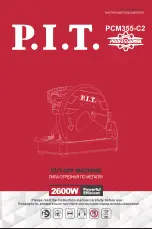
The backbone ring (the building’s backbone network) is a 16-Mbit/s token
ring, which is accessible from each floor. Application rings, installed on each
floor, are 4-Mbit/s token rings. Computers are attached to the application
rings. IBM source-routing bridges are used to connect the application rings
to the backbone ring. Source-routing bridges are PS/2 personal computers
with two token ring interface cards. The functions of the source-routing
bridge are provided by IBM’s Token Ring Bridge Program.
Source Routing
Source routing is just what the name implies. In a multi-ring topology where
token rings are connected by source-routing bridges, originating systems
(end systems or nodes) specify the route that packets must follow to reach
their destination. To determine the route to a particular destination system, a
system must first discover the route to that destination. An end system with
data to send to another end system (with which it has not yet communi-
cated) begins the discovery process by transmitting a discovery packet. All
source-routing bridges receive the packet, insert their network identifiers in
the packet’s Routing Information Field, and then retransmit the packet on all
network interfaces other than the one on which the discovery packet was
received. The destination system receiving the packet responds by returning
the route information received in the discovery packet to the originating
system. Once the route has been discovered, originating systems send data
to the destination with the route inserted in the packet’s Routing Information
Field.
Unlike transparent (or learning) bridges, such as the HP 10:10 LAN Bridge,
source-routing bridges do not maintain an address table. Thus, bridging
decisions are not based on a forwarding table. Rather, forwarding and
filtering decisions are based solely upon the Routing Information Field
contained in each packet. The burden of discovering and defining the route a
packet will take rests mainly with the communicating systems. Source-
routing bridges assist in the discovery process and subsequently follow
routing instructions contained in each packet.
In contrast, systems using transparent bridges have no information
indicating whether a destination system is on the LAN or not. The burden of
discovering a route and routing packets to a particular system rests entirely
with the transparent bridge.
Bridging Service
Token Ring Solutions
2-10
Содержание 600 Series
Страница 1: ...Hewlett Packard Series 200 400 and 600 Routers HP Routing Services and Applications ...
Страница 4: ......
Страница 5: ...1 Product Notes ...
Страница 6: ...Features of HP Routers Architecture and Technology Branch Office Routing Product Notes 1 2 ...
Страница 38: ...Architecture and Technology Software Control Path Architecture 1 34 ...
Страница 52: ...Branch Office Routing Future Directions 1 48 ...
Страница 53: ...2 Routing Services Notes ...
Страница 106: ...Bridging Service Traffic Prioritization 2 54 ...
Страница 158: ...Novell IPX Routing Service NetBIOS Protocol Support 2 106 ...
Страница 194: ...Data Compression for WAN Links Conclusion 2 142 ...
Страница 195: ...3 Application Notes and Case Studies ...
Страница 224: ...Improving Network Availability Application Recovery 3 30 ...
Страница 234: ...ISDN Wide Area Network Design Dry Creek Joint Elem School District Performance 3 40 ...
Страница 316: ......
















































